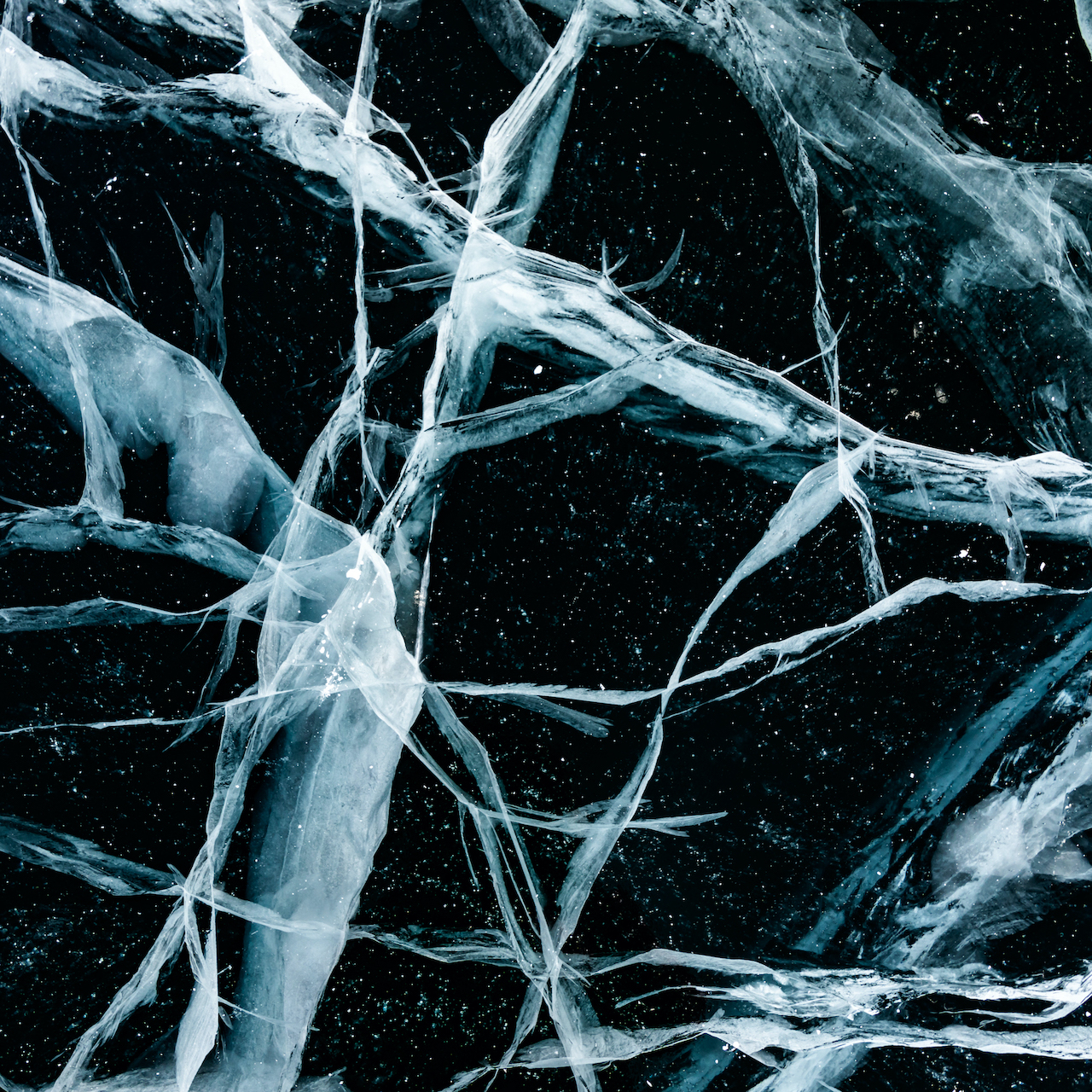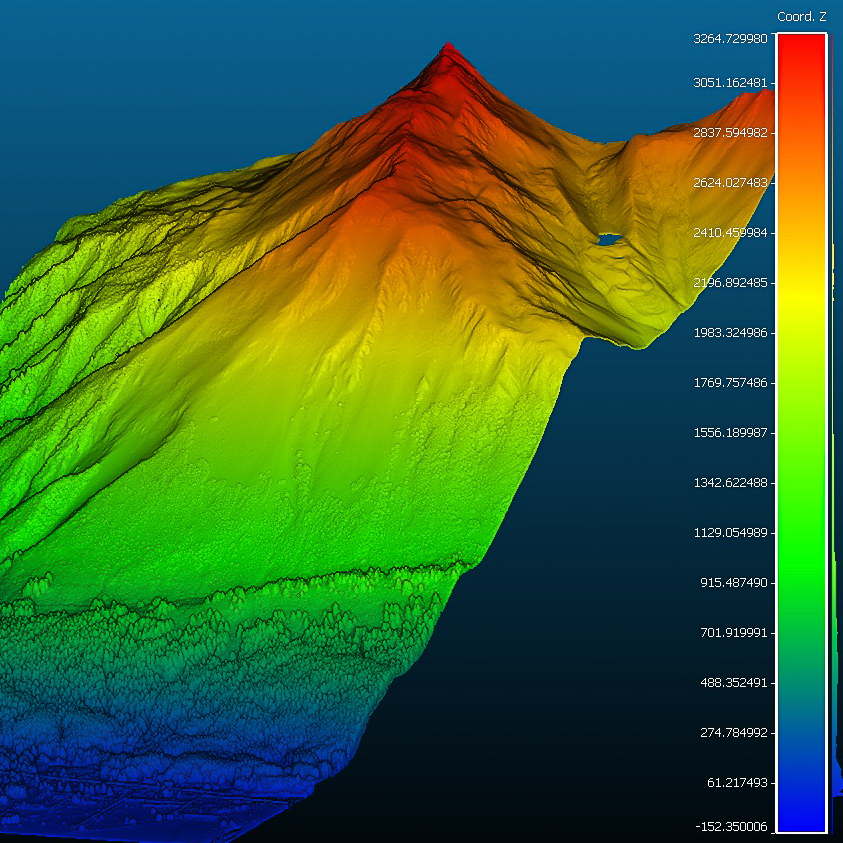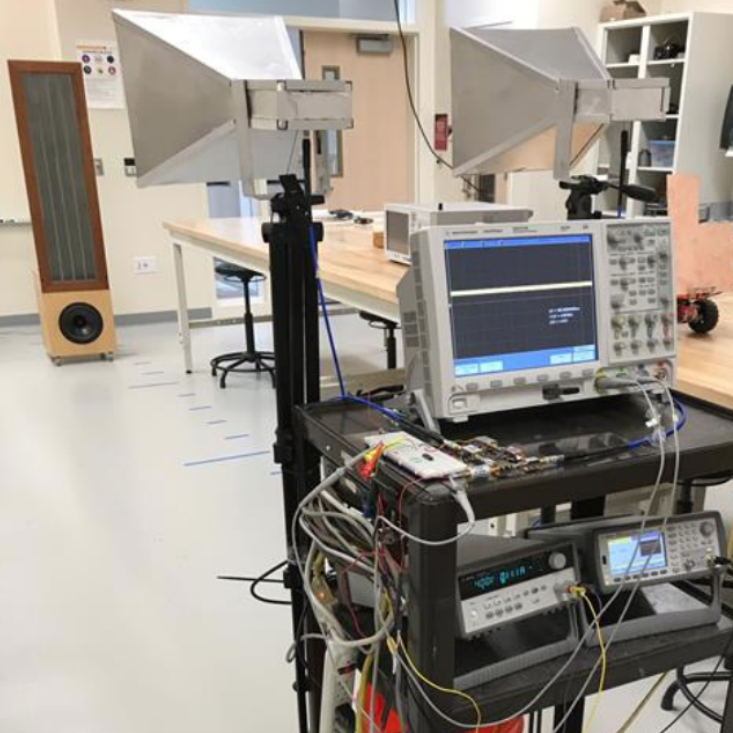Past Presentations
 Breaking Ice Beams
Breaking Ice Beams
When engineers study materials, they say that the quickest way to learn about a material is to break it. Unless it's a polymer, then you set it on fire. Anyway, join Dr. Scott Hamel as he studies ice beams the engineering way, by breaking them! You'll also get a glimpse into the ConnocoPhillips Structures Testing Lab where all the deconstruction happens in the name of engineering! This is a great chance to learn about Civil Engineering and UAA.
 Geomatics in the 21st Century
Geomatics in the 21st Century
What is Geomatics? We get that question a lot. Geomatics is a discipline that integrates the acquisition, management, analysis, modeling
and presentation of geospatial information. Geomatics is one of the fastest growing
information sciences. The techniques and skills you’ll gain are in high demand within
a wide range of industry sectors.
Join us for a glimpse at what Geomatics looks like in the 21st century! Explore an augmented reality sand box that teaches mapping, topography, watersheds, natural hazards, and more. Explore how drone-mounted sensors are used to detect melting permafrost and monitor environmental dynamics in Alaska’s rapidly changing climate and coastline. Learn about what a geomatics career look like through several students/industry spotlights.
 Digital Bits and Their Applications
Digital Bits and Their Applications
Join Dr. Sebastian Neumayer to explore digital bits and their applications. You will have a chance to play an interactive game competing against a 'dumb' and 'smart' version of a program to guess a number between 1 and 100, and then discuss algorithms. Dr. Neumayer will also use an FPGA circuit board to demonstrate binary numbers using LEDs. Afterward, learn more about Computer Science & Systems Engineering.
 Music + Engineering
Music + Engineering
Join Dr. Jens Munk (virtually) in the electromagnetics lab as he showcases his pride and joy--a set of electrostatic speakers built by engineering students at UAA. Discover what makes these speakers unique, and enjoy chilling and listening to some music. Dr. Munk will also provide insight into a number of projects from the electrical engineering department, including a step frequency radar system. This is a great opportunity to learn about electrical engineering and what programs and opportunities could await you at UAA.
 Pump Power Curve
Pump Power Curve
POWER PUMP CURVE: Join Dr. Getu Hailu to learn about pumps! Did you know pumps are the most widely used equipment, preceded by electric motors only? In everyday life, you are probably using at least one pump. There is a pump in the washing machine that drains the used dirty water and replaces it with fresh water. If you own a car, you know how important it is to maintain an optimum operating temperature of your car. A water pump is essential to your car’s operation. The pump ensures that the coolant keeps circulating through the engine block, hoses and radiator, and maintains an optimum operating temperature.
One of the important requirements of pumps is that they need to develop a certain amount of pressure to push the liquid through the pipes and hoses. We are also interested in knowing the power requirement for these pumps when they are working. A graphical interpretation of the relationship between the flow rate, pressure developed, and power requirement is given in “Pump Performance Curves”. In this demonstration you will be able to see how we determine the pressure pumps develop at specified flow rates and the power required to do so. SWINGING HAMMER LIKE
A PENDULUM-CHARPY IMPACT TEST: Have you ever seen a heavy hammer or an anvil swing like a pendulum? Join Dr. Raghu Srinivasan and Mr. Tim Kirk in the Materials Testing Lab where a heavy hammer is dropped on to steel specimens at different temperatures to qualitatively determine their impact toughness. Most metals go through elastic deformation under applied force (very small though). This is very similar to a rubber band where they can be expanded under force and restored to its original shape once the applied force is removed. This phenomenon in metals is not apparent visibly like the rubber band. Once the applied force exceeds a certain value, metal changes its shape permanently (cannot be restored to its original shape after the force is removed) and this phenomenon is called plastic deformation. Most metals eventually fail after going through elastic and plastic deformation and we call this as ductile fracture. Some metals fracture right after elastic deformation without any plastic deformation (similar to glass rods) and we call this as brittle fracture. There are few metals that go through this transition from ductile to brittle fracture as the temperature decreases. This Charpy Impact test will show the fracture of steel specimens at different temperatures and how it absorbs the energy when the anvil is dropped from a pendulum.
Computer Science & Systems Engineering
- Welcome, faculty introductions, overview of Computer Science discipline (19:05)
- Bitcoin Enabled Candy Dispenser Demo & Hardware Pong on FPGA (59:36)
- Robotics and Innovation Lab tour with UAA Robotics Club (1:13:00)
- Kenai Watershed Virtual Reality Demo & Harry Potter Spell Demo with Computer Science Club (1:32:13)
Computer Science & Systems Engineering and Electrical Engineering
Civil & Mechanical Engineering, Geomatics, and Project Management
Electrical Engineering
- Welcome, faculty introductions, overview of Electrical Engineering discipline (13:00)
- Tour of Electrical Power and Utility Lab (26:45)
- Electricity demonstrations with student chapter of the Institute of Electrical and Electronics Engineers (43:00)
- Robotics and Innovation Lab tour with UAA Robotics Club (1:01:00)
- Tour of Electromagnetics Lab with doppler radar and electrostatic speaker demos and (1:18:27)
Mechanical Engineering
- Welcome, faculty introductions, overview of Mechanical Engineering (8:55)
- Meet and greet time (offline)
- Tour of Microscopy Lab (1:07:34)
- Tour of HVAC lab (1:37:48)









